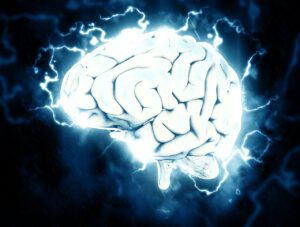By Cristian Bustos. Originally published at ValueWalk.

According to data from the United States Census Bureau examined for the American Academy of Arts And Sciences State Of Language In The U.S. report, more than 60 million people over the age of five, or about 20% of the U.S. population, speak a language other than English at home. Being able to speak more than one language has become a necessity in today’s global economy. Knowing a second language can be seen as an advantage, as it helps you connect with the globalized world.
Q3 2021 hedge fund letters, conferences and more
Learning a new language is one of the most rewarding experiences you can have, and it’s easier than you think. The amount of time it takes to acquire a second language may differ from person to person, but the process remains the same: practice reading and speaking the language.
The more you read a language, the better you will understand it. You can also speed up the learning process by surrounding yourself with native speakers of the language you wish to learn and actively practicing your speech.
Understanding Language Acquisition
Language acquisition is the process by which we learn to produce and comprehend language. It can be split into two main categories: listening/ speaking and reading/ writing. Acquiring a language as a child has some parallels to — and some differences from — learning a language as an adult. Children learn language naturally through interaction with other children and adults, as previously stated.
While both children and adults learn the fundamentals similarly, children can achieve higher levels of language competency sooner than adults due to their brains’ greater adaptability to new rules. Adults and children take different approaches to acquiring a new language. Adults approach the task with an adult problem-solving method. On the other hand, children are less concerned with rules and just absorb new information.
Identifying Learning Struggles
Victor Brunko, CEO of the language learning startup Voccent, has identified the following problem with second-language acquisition: in nature, it’s impossible to record audio files. That’s why humans have many feedback lines in our speech processing pathways to hear our own voice from the inside of the skull in a very specific way. The greater the difference between the reference of the audio and the reproduced (test) audio, the more the observable feeling of something going wrong. That is one of the many paradigms Voccent is utilizing to emphasize and accelerate the language skill acquisition process.
Modern Learning Solutions
Online language learning platforms and mobile apps like Duolingo have been around for quite some time now. Luis von Ahn, CEO and co-founder of Duolingo, ensured that while practicing speech and spelling, users gained valuable knowledge. The app became popular as it contains a set-out variety of phrases for certain scenarios, including travel, greetings, and even holidays, which makes it a popular choice when traveling.
On the other hand, Voccent allows users to create their own experiences or join in on others’ experiences. The Voccent Channels platform allows users to produce new content. The material could be as basic as a three- to five-second challenge (e.g., repeat something) that you can then share with your friends to test their knowledge. You can also find playlists or graphs of problems with directions on how to listen to and pronounce specific language utterances or something more complex.
The stronger the connections between the brain’s neurons, the more people practice their talent in a particular language, dialect, or any other form of auditory content they are trying to repeat. As the strength of these connections grows, the amount of effort required to produce more speech or listen more deeply decreases. This frees up the brain’s resources to focus on other tasks, such as building more sophisticated language structures.
Language And The Brain
As mentioned above, learning a new language has many benefits for the brain. Language acquisition has the following impact on the brain:
- It develops mental acuity. Learning a language requires an increase in awareness, which can be applied to other aspects of your life.
- It improves your multitasking skills. People who speak multiple languages have greater cognitive flexibility and are better able to adjust to new conditions.
- It improves your memory. Learning a language exercises your memory and trains your brain to retain information more accurately and rapidly.
- It delays the beginning of Alzheimer’s disease. Being bilingual or multilingual can aid in the postponing of the onset of Alzheimer’s and dementia by five years. That’s far superior to the majority of contemporary medications.
- It increases the speed of your decision-making. Making additional selections will be easier if your mind has become accustomed to continually picking between multiple word options.
Final Thought
Even though it is strongly recommended that you begin learning a new language as soon as possible in your life, you are never too old to do so. By staying consistent, reading, and practicing, you are not only acquiring a new skill but also sharpening the ones you already have.
Updated on
Sign up for ValueWalk’s free newsletter here.



